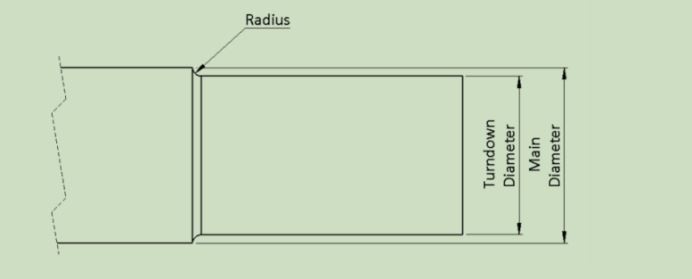 Afrikaans
Afrikaans  Albanian
Albanian  Amharic
Amharic  Arabic
Arabic  Armenian
Armenian  Azerbaijani
Azerbaijani  Basque
Basque  Belarusian
Belarusian  Bengali
Bengali  Bosnian
Bosnian  Bulgarian
Bulgarian  Catalan
Catalan  Cebuano
Cebuano  Corsican
Corsican  Croatian
Croatian  Czech
Czech  Danish
Danish  Dutch
Dutch  English
English  Esperanto
Esperanto  Estonian
Estonian  Finnish
Finnish  French
French  Frisian
Frisian  Galician
Galician  Georgian
Georgian  German
German  Greek
Greek  Gujarati
Gujarati  Haitian Creole
Haitian Creole  hausa
hausa  hawaiian
hawaiian  Hebrew
Hebrew  Hindi
Hindi  Miao
Miao  Hungarian
Hungarian  Icelandic
Icelandic  igbo
igbo  Indonesian
Indonesian  irish
irish  Italian
Italian  Japanese
Japanese  Javanese
Javanese  Kannada
Kannada  kazakh
kazakh  Khmer
Khmer  Rwandese
Rwandese  Korean
Korean  Kurdish
Kurdish  Kyrgyz
Kyrgyz  Lao
Lao  Latin
Latin  Latvian
Latvian  Lithuanian
Lithuanian  Luxembourgish
Luxembourgish  Macedonian
Macedonian  Malgashi
Malgashi  Malay
Malay  Malayalam
Malayalam  Maltese
Maltese  Maori
Maori  Marathi
Marathi  Mongolian
Mongolian  Myanmar
Myanmar  Nepali
Nepali  Norwegian
Norwegian  Norwegian
Norwegian  Occitan
Occitan  Pashto
Pashto  Persian
Persian  Polish
Polish  Portuguese
Portuguese  Punjabi
Punjabi  Romanian
Romanian  Russian
Russian  Samoan
Samoan  Scottish Gaelic
Scottish Gaelic  Serbian
Serbian  Sesotho
Sesotho  Shona
Shona  Sindhi
Sindhi  Sinhala
Sinhala  Slovak
Slovak  Slovenian
Slovenian  Somali
Somali  Spanish
Spanish  Sundanese
Sundanese  Swahili
Swahili  Swedish
Swedish  Tagalog
Tagalog  Tajik
Tajik  Tamil
Tamil  Tatar
Tatar  Telugu
Telugu  Thai
Thai  Turkish
Turkish  Turkmen
Turkmen  Ukrainian
Ukrainian  Urdu
Urdu  Uighur
Uighur  Uzbek
Uzbek  Vietnamese
Vietnamese  Welsh
Welsh  Bantu
Bantu  Yiddish
Yiddish  Yoruba
Yoruba  Zulu
Zulu Design Considerations for Bearing Housing in Idler Roller Applications and Their Impact on Performance
Understanding Bearing Housing for Idler Rollers
Bearing housings play a crucial role in the functionality and longevity of various mechanical systems, particularly in conveyor and industrial machinery applications. Among these components, the bearing housing for idler rollers stands out due to its importance in supporting and securing the idler roller itself, which is critical in the smooth operation of belt systems. This article aims to explore the significance, design, and maintenance considerations associated with bearing housings for idler rollers.
Significance of Bearing Housing
Idler rollers are predominantly used in conveyor systems where they support the conveyor belt and improve its efficiency and performance. Their primary function is to maintain belt tension, guide the belt, and reduce friction. However, to effectively fulfill these roles, the rollers need stable support, which is where bearing housings come in. A well-designed bearing housing provides structural integrity, enables smooth rotation of the idler roller, and protects the bearing from dust, debris, and moisture, ultimately prolonging the lifespan of both the roller and the bearing.
Design Features
Bearing housings for idler rollers come in various designs tailored to specific applications. Key design considerations include material selection, dimensional accuracy, load capacity, and mounting configurations. Common materials used for bearing housings include cast iron, steel, and thermoplastics, each offering unique benefits in terms of strength, weight, and resistance to environmental factors.
Moreover, the housing must be precisely engineered to fit the specific bearing type and idler roller dimensions. This precision ensures minimal play between the components, reducing wear and tear. Additionally, the design often incorporates features such as lubrication ports for easy maintenance and seals to prevent contamination.
bearing housing for idler roller

The mounting of the bearing housing is also vital. It may be bolted or welded to a frame or mounting bracket, depending on the application requirements. A robust mounting system is essential for maintaining alignment and stability, especially in high-load or dynamic environments.
Maintenance Considerations
While bearing housings are designed for durability, regular maintenance is essential for optimal performance. Routine inspections of the bearing housing can help identify signs of wear or damage, such as corrosion, cracks, or excessive play. Addressing these issues promptly can prevent more significant failures that could lead to costly downtime.
Lubrication is another critical maintenance task. Adequate lubrication reduces friction between the bearing and housing, thus minimizing heat generation and wear. Depending on the design, some housings might have grease fittings or self-lubricating features that facilitate maintenance.
Moreover, it’s essential to monitor the operating environment. Ensuring that the idler rollers and bearing housings are kept free from contaminants can significantly enhance their performance and lifespan. In particularly harsh environments, adding protective covers or shields may be beneficial to fend off dust, water, and debris.
Conclusion
In summary, the bearing housing for idler rollers is a vital component in many industrial applications, supporting the effective operation of conveyor systems. Its design must consider the specific requirements of the idler roller, ensuring durability and performance. Through regular maintenance and vigilance against environmental conditions, the longevity and efficiency of both the bearing housing and the idler roller can be significantly improved. As industries continue to evolve, advancements in bearing housing technology will likely contribute further to the efficiency and reliability of mechanical systems. Understanding and investing in these components will undoubtedly yield significant benefits in operational performance and sustainability.
-
Revolutionizing Conveyor Reliability with Advanced Rubber Lagging PulleysNewsJul.22,2025
-
Powering Precision and Durability with Expert Manufacturers of Conveyor ComponentsNewsJul.22,2025
-
Optimizing Conveyor Systems with Advanced Conveyor AccessoriesNewsJul.22,2025
-
Maximize Conveyor Efficiency with Quality Conveyor Idler PulleysNewsJul.22,2025
-
Future-Proof Your Conveyor System with High-Performance Polyurethane RollerNewsJul.22,2025
-
Driving Efficiency Forward with Quality Idlers and RollersNewsJul.22,2025





























